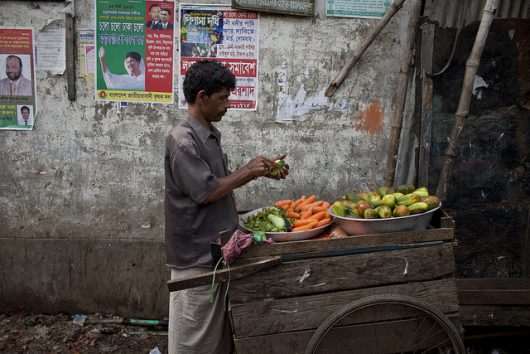10 Worst Slums in the World

According to Merriam-Webster, the definition of a slum is “a densely populated usually urban area marked by crowding, dirty run-down housing, poverty and social disorganization.” The worst slums in the world have combinations of inadequate shelter, limited access to healthcare, sanitation, clean water and education.
Facts About the 10 Worst Slums in the World
- Kibera, Nairobi, Kenya (700,000 people)
Kenya has many of the 10 worst slums in the world. Kibera is about five kilometers from the center of Nairobi and has been called Africa’s largest slum. Nearly half the population is without work, there is no garbage collection, and there is limited access to clean water. - Mathare, Nairobi, Kenya (200,000 people)
Mathare is one of Nairobi’s oldest slums, with residents dating back to the 1920s. This area lacks necessities such as electricity, roads, clean water and sanitation. - Kawangware, Nairobi, Kenya (650,000 people)
Kawangware is 15 kilometers west of the center of Nairobi. Poverty is a serious issue, with most living on less than $1 each day. Most families can’t afford more than one meal a day so malnutrition is rampant. Disease, lack of clean water and lack of funds to afford education are also major problems. - Kangemi, Nairobi, Kenya (100,000 people)
Kangemi is home to some of Nairobi’s poorest. Lack of running water, high unemployment, drug addiction, alcoholism and HIV are significant issues in the area. - Khayelitsha, Cape Town, South Africa (400,000 people)
Sanitation is a huge issue in Khayelitsha with thousands lacking access to toilets. Other issues include shack-style housing and the fact that 99 percent of the population is black due to “spatial segregation.” - Orangi Town, Karachi, Pakistan (2.4 million people)
Lack of housing isn’t as much of an issue as limited resources. Locals ended up building their own sewers after waiting on the government to build them. Now 96 percent of households have a toilet. - Ciudad Neza, Mexico City, Mexico (1.2 million people)
Locals have worked hard to form a sense of community and improve public services. The area is still in need of more employment, more transportation and more schools. - Dharavi, Mumbai, India (1 million people)
Dharavi is often regarded as the largest slum in Asia and is well known as the filming location for Slumdog Millionaire. Most residents have gas for cooking and electricity. Despite the area’s many struggles, it has a booming small business sector. - Rocinha, Rio de Janeiro, Brazil (200,000 people) Rocinha is the largest favela in Brazil. While most locals have electricity and running water, the larger issue is sanitation. The average monthly income is $240.
- Makoko, Lagos (40,000 – 300,000 people) Makoko is an area of six collective slum villages. Four of these villages are floating on water in the lagoon and two are situated on land. Issues that face this community include malnutrition, childbirth and diseases like malaria.
The 10 worst slums in the world face serious issues. One-fourth of those living in a city resides in a slum, which equates to more than 900 million people globally. With proper assistance, government reconstruction and international aid, many of the factors contributing to the creation of a slum can be extinguished.
– Shannon Elder
Photo: Flickr
Get Smarter
